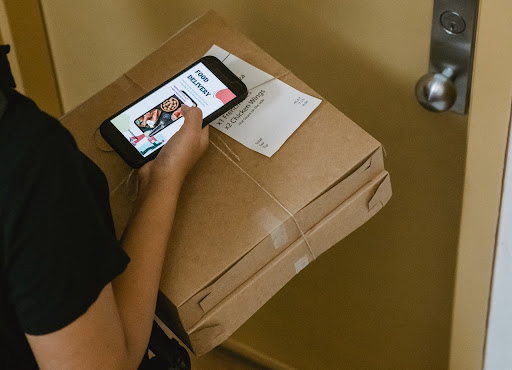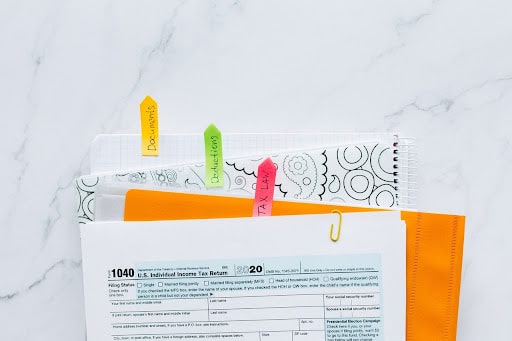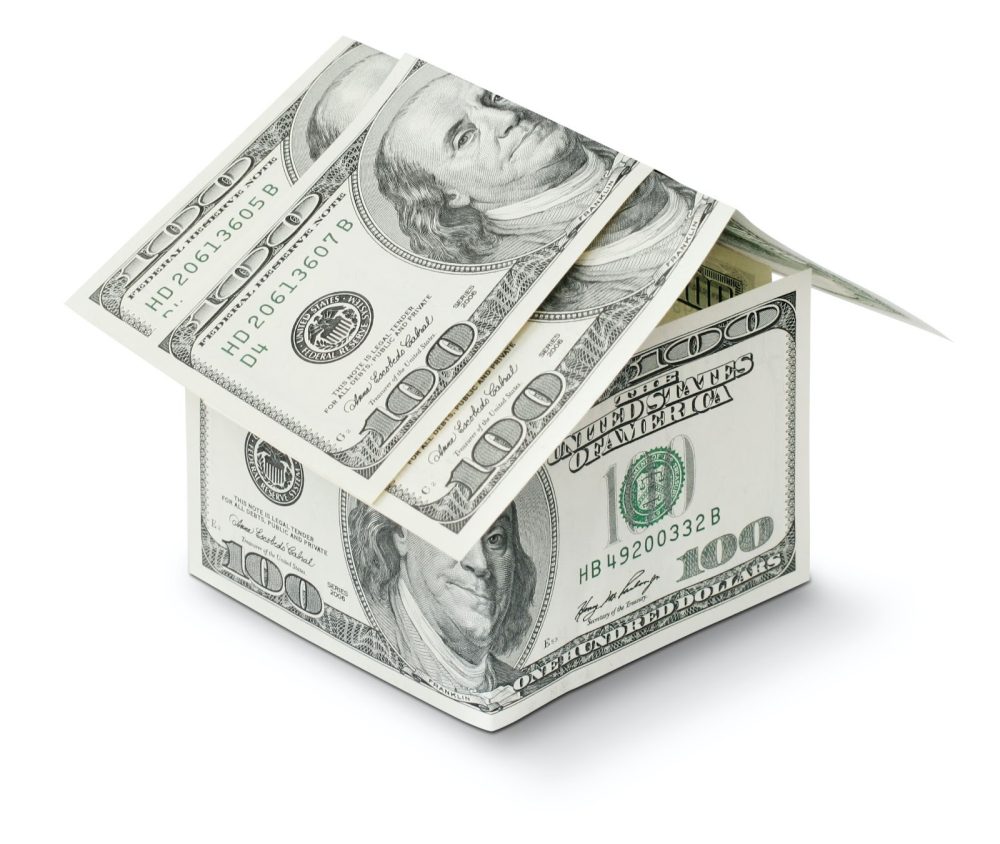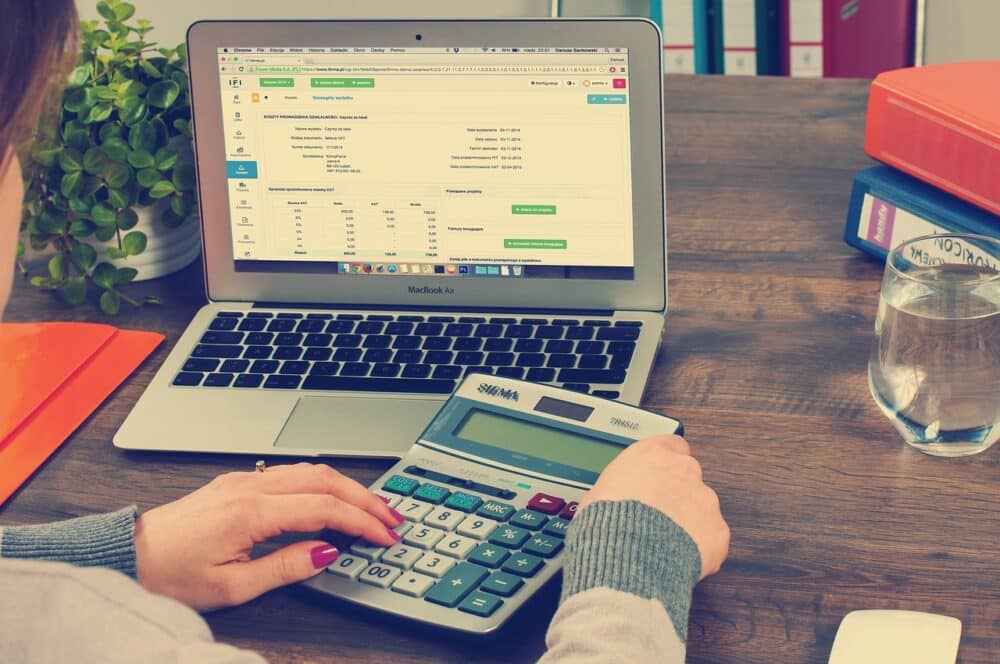
How to Find Doordash Pay Stubs (+ Other Tax-time Questions Answered)

Tax season comes and goes without a second thought for the average employee. It’s easy to file taxes when all you have to do is transfer numbers from one box to another. If you deliver for Doordash, get your Doordash pay stubs ready.
But when you’re self-employed, things can get confusing.
To help you out, we’ve put together a list of some common and trending questions that arise around tax time.
Whether you work for Doordash daily or it’s just a side hustle, these tax-time FAQs will help you out.
That way, you can get a head start on maximizing your return and minimizing your payment this year.
Where Can I Find My DoorDash Pay Stubs?
Simply put, they don’t exist. Doordash doesn’t disperse paystubs like a typical employer since they’re not a typical employer.
Essentially, Doordash is just a platform individuals use to start a food delivery business.
While you can log into your Dasher app account and view your earnings, you won’t be able to find a paystub like you would with most other jobs.
The difference is that you’re an independent contractor when you drive for Doordash – not an employee. That means you’ll have to file your taxes as a business owner, which comes with a few extra steps, but nothing you can’t handle.
You’ll have to keep track of things like your mileage, fuel, vehicle maintenance and repairs, and any other Doordash-related expenses as they happen.
At first, this might seem like a burden, but it’s actually a blessing in disguise.
Why?
Because it will spare you the time of thumbing through your bank statements at tax season.
What Is My Tax Burden as an Independent Contractor?
If you’re new to independent contractor work, it’s crucial to understand how it differs from regular employment when tax season arrives.
As a driver for Doordash, in the eyes of the Internal Revenue Service (IRS), you own your food delivery service. That means that you don’t work for Doordash — Doordash is one of your clients.
So Doordash doesn’t take money for the Federal Income Contributions Act (FICA), Social Security, or Medicare from your regular payouts.
Instead, it’s your responsibility as an independent contractor to calculate your profit and expenses for the year so you know how much to pay Uncle Sam when the time comes.
Prefer professional help when it comes to paying your taxes? Join Selfgood and get access to financial services you thought you’d have to give up as an independent contractor.
Is Doordash Pay Considered Income or Profit?
The IRS views any money you gain as income, so if you were a regular employee, your taxes would be calculated based on your gross hourly wages.
You’re not a regular employee, though.
As a Doordash driver, you’re also a business owner with business expenses.
The IRS understands that it takes money to run a business, so they consider your income to be what’s left after you account for your expenses.
Essentially, your taxable income (profit) equals your revenue (all your Doordash earnings, like your base pay and customer tips) minus your expenses.
We’ll go more in-depth on the topic of expenses later.
Will Doordash Send Me a W-2?
Because you’re an independent contractor and not a Doordash employee, you’ll receive a 1099 NEC instead of a W-2.
The 1099 and the W-2 show how much a person has earned from a company in any given year. The difference is that regular payroll employees receive a W-2 while freelancers and contractors receive a 1099.
This will serve as your employment verification to prove your income (better than a screenshot of the Dasher app, right?)
Like any other employee, you may receive your income as a direct deposit in your bank account. But that’s about where the similarities end. Unsurprisingly then, the IRS treats you differently.
A W-2 breaks down how much money you’ve earned and how much money you’ve paid in taxes throughout the entire year.
A 1099 only shows how much money you’ve earned — the taxes are up to you.
What Is Self-Employment Tax?

Self-employment tax refers to your Social Security and Medicare taxes. You don’t want to miss this if you’re filing your own taxes for the first time as a Doordash Dasher.
Payroll employees usually split Social Security and Medicare taxes 50/50 with their employers (often without even knowing it).
Since you’re not a payroll employee, you have to cover both your and the employer’s portion of the tax.
There’s no need to raise the alarms, though — you’ll be able to deduct the employer portion of this tax when calculating your adjusted gross income.
What Is an EIN?
“EIN” in the tax world stands for Employer Identification Number. It’s just a number that the IRS uses to recognize and keep track of employers officially.
You’re going to need Doordash’s EIN to do your taxes as an independent contractor:
46-2852392
It’s another way both Doordash and gig economy workers provide income verification for the IRS.
Subscribe To SelfGood
Get up to date perks and Gigworker news. Easy. Simply. SelfGood. Subscribe.
What Deductions Can I Make?
You can rack up many expenses during your Doordash delivery work. However, there’s no need to worry because they can be written off and deducted from your taxes.
Here are some expenses you have the option to write off:
Mileage
If you want to minimize the taxes you owe, you must track your mileage.
You can do this the old-fashioned method with a pen and paper or use a mileage tracking app like Stride, Everlance, or Triplog.
Either way, you need to be sure that you count the miles you’ve driven while working.
It’s vital to note that you can’t count personal or commuting miles toward your taxes — only the miles you’ve driven while picking up and delivering.
Maintenance and Repairs
Every vehicle requires maintenance.
Parts wear out over time, and you need to replace them to continue running your delivery business. That means that you’re able to include all maintenance and repair costs associated with your delivery vehicle.
Those costs can be challenging to keep track of over the year, so the IRS calculated a standard mileage deduction of $0.56 per mile.
This includes maintenance, gas, insurance, and depreciation.
You can choose to calculate the exact deduction amount based on your actual expenses. But in most cases, it’s going to save you more money to go with the IRS standard deduction method.
That way, you only have to track your miles!
Parking and Tolls
If you work in an area where parking is never free, and you have to pay a toll every time you get off the highway, you’re in luck.
You can actually include these costs in your deduction. This is another detail you need to keep track of.
However, it doesn’t cost you anything extra to keep track of your parking receipts so you can add them up at the end of the year.
When it comes to your delivery business, you probably want to maximize any chance at a deduction.
Phone Service
As a delivery driver, it’s essential that you have a cell phone. Whether you drive for Lyft, Uber, or yes, Doordash, you need to stay in touch with your customers at all times.
So naturally, the costs associated with your phone service can count towards your deduction. If you use it for business, it’s a business expense, so be sure to include it.
There’s a small catch, though — you probably don’t use your cell phone entirely for work, which means that you can’t wholly count it toward your tax deduction.
For example, if you use your phone 75% of the time for personal use and 25% of the time for business, you’re only able to count 25% of the cost of your phone service toward your tax deduction.
You can check phone records to calculate an exact percentage or approximate a percentage on the hours of the day you work.
Either way, this deduction can save you a few extra dollars.
Health Insurance
Health insurance is a massive cost for any small business owner, and if your full-time job is as a Doordash driver, you need to provide your own insurance plan.
That being said, it’s probably good news that you may be able to write this off as an expense.
Not everyone qualifies, though. There are two criteria that you need to meet to qualify.
The first is that the insurance policy you’re deducting is in your name or your business name.
The second is that you’re not already on anyone else’s health insurance policy.
That means if you have a spouse with an insurance policy they’re able to add you to, you’re unable to take the health insurance deduction whether you’re using your spouse’s insurance or not.
Are you a gig worker without health insurance? Don’t keep risking your health and wellbeing. Selfgood can help you get health insurance and health-related benefits like low-cost prescriptions, Teladoc services, and free doctor visits.
Courier Bags
As a Doordash driver, you don’t have to wear a uniform, so you won’t be able to take a uniform deduction on your tax return.
But those insulated courier bags are a different story.
Those things wear out over time and need replacing just like anything else, so make sure you keep receipts or records of those transactions so you can deduct them at the end of the year!
Are There Deductions I Can’t Make?

There are a couple of common deductions Doordash drivers cannot claim.
Home Office Deduction
If you spend most of your work time in a home office and leave that space designated for work, you’d usually be able to include this deduction.
However, since you probably spend more time behind the wheel of your car than in a home office, you won’t be able to take this deduction.
Uniform Deduction
Certain companies might require their employees to wear uniforms and replace them whenever necessary for the job. So many times, the IRS allows employees to write off the cost of uniforms as a work expense.
However, Doordash doesn’t require you to wear a uniform.
Purchasing and wearing Doordash apparel while you make deliveries is a voluntary act, so you can’t take this deduction.
But as we mentioned earlier, you’re able to take a deduction for your courier bags.
How Do I File My Taxes?
Filing your taxes is the easy part. The tricky part is gathering all of the information you’ll need to fill out your tax forms.
This includes everything we’ve already mentioned:
- Mileage logs
- Receipts for maintenance, repairs, and gas (if you’re not taking the standard mileage deduction)
- Receipts for parking & tolls
- Cell phone bills
- Health insurance policy
- Receipts for courier bags
Once you’ve gathered the above information, you’re almost ready to start calculating your taxes.
Next, you’ll need these documents as your proof of income:
- 1099 NEC
- Schedule C (Form 1040)
- Schedule SE (Form 1040)
As the new fiscal year starts, you’ll receive a 1099 NEC from Doordash.com telling you exactly how much money they paid you during the previous year.
This form shows your gross income — not your profit. Remember, you need to deduct your business expenses first.
Schedule C (Form 1040) is the document you’ll need to fill out to calculate your business expenses (deductions). Schedule SE (Form 1040) is the form you’ll use to calculate your self-employment taxes.
The IRS tax code isn’t the easiest thing in the world to understand, so if you have the extra cash to meet with a Certified Personal Accountant (CPA), it may be in your best interest to do so.
Getting advice from a CPA can save you headaches down the road. They know how you should fill out and file forms properly.
If you’re looking for a quick turnaround, the fastest way to fill out and deliver your tax return is by filing electronically through a platform like TurboTax or H&R Block.
Conclusion
Working for yourself can be extremely rewarding, whether full- or part-time.
And when you deliver through Doordash.com, you’re providing your community with an essential service.
Like Instacart, Grubhub, and Postmates drivers, you deliver foods and goods to those who may be housebound, do not have a vehicle, or simply prefer to pay for the convenience of delivery.
You also have the potential to make a lot more than minimum wage by doing so!
But it’s not easy to find the answers you’re looking for when you’re a Doordash driver. Sometimes, even bosses need help, and that’s where Selfgood comes in.
Joining Selfgood gives independent contractors like you the answers you need – from finding your Doordash pay stubs to financial coaching to everyday money-saving benefits.





